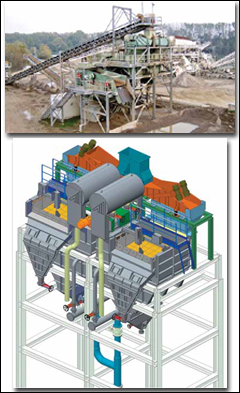2nd Hand Equipment - Coming soon!

We are now putting the final touches to the World Mining Equipment 2nd Hand market place. If you would like information on this service contact


W Resources (WRES), operator of the La Parrilla tungsten/tin mine in southwestern Spain, has installed two alljig fines jigs from German supplier allmineral, and anticipates that the upgrade will provide a significant boost toward doubling annual output to 5,000 metric tons (mt) per year in the future. According to allmineral, the mining company also expects to see an increase in product quality as a result of deploying this processing technology.
The largest known tungsten deposits in the western world that can be mined cost-effectively are found some 300 kilometers (km) southwest of Madrid. The La Parrilla mine, located near the Portuguese border, is one of five sites on the Iberian Peninsula mined by WRES. By intensifying and optimizing its ore mining operations in the Extremadura region, the British mining company is looking to surpass the annual output of what is currently the world’s largest tungsten mine — Masan Resources’ Núi Pháo operation in northern Vietnam — by 2020. Around 90% of the world’s production of tungsten goes toward making tungsten steel, the raw material for tool steels.
At La Parilla, the extraction emphasis is on scheelite, which is floated and then enriched into concentrates containing more than 65% of the mixed oxide called tungstate. The Parrilla mine also extracts cassiterite for its high tin content. The mine operators are aiming for an overall metal recovery of at least 90% from the processed ore.
According to allmineral, the jig plant’s throughput of 350 mt/hour (mt/h) will provide reliable and adaptable separation, concentration and cleaning of preground ore (2 to 10 millimeter [mm] grain size). The air-pulsed twin machines are physically stable in operation, said allmineral, allowing an optimum jigging stroke with a minimum of energy consumption. The feed material is first loosened and fluidized by pulsating water, forming layers of grains according to their density, and subsequently separating the heavy material from the stratified material bed. The jigging motion used to separate the particles is wear-free and induced by air, allowing the stroke motion (frequency, amplitude and shape) to be adjusted within a wide range of operating parameters.
allmineral noted that its energy-saving jigging systems are capable of reliably and efficiently sorting primary and secondary raw and waste materials of different particle density: gravel, coal, ore, slag, sand, rubble and various recycling materials. More than 500 alljig jigging machines have gone into operations worldwide over almost 30 years, according to the company.